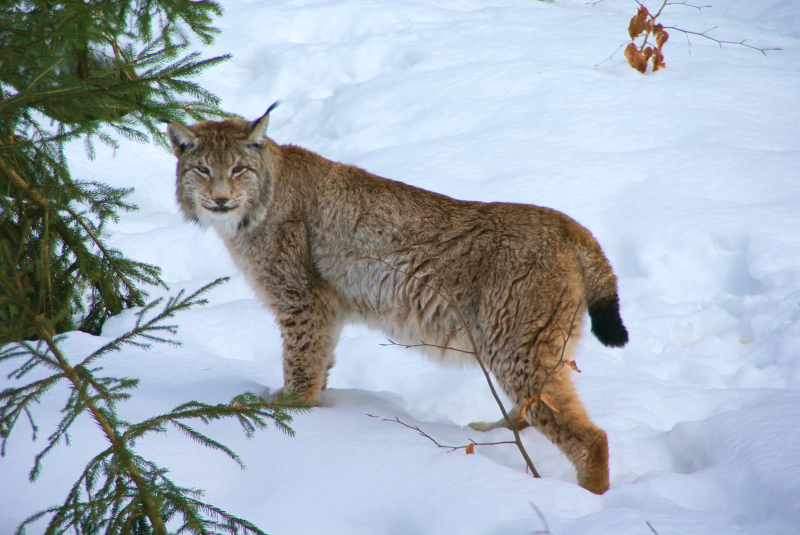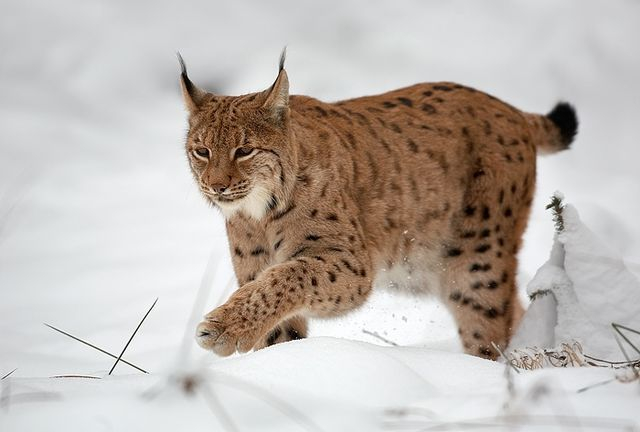Lynx
All lynx species have white fur, which is an extension of the chest and belly fur, on their chests, bellies, and the inside of their legs. The climate in the lynx's range affects the color, length, and size of their paws. They have short hair, are black, and have smaller, less-padded paws in the Southwestern United States. Lynx gradually develops thicker fur, a lighter hue, and larger, more cushioned paws as conditions become colder and further northerly in order to acclimatize to the snow. The size of their paws may exceed that of a human hand or foot.
Since the lynx depends so heavily on obtaining its prey, its population is prone to change depending on the amount of prey that is readily available in a given area.
A lynx would frequently pursue and pounce to capture hares because they are the ideal size for consumption. They frequently observe their prey for a while before leaping out and killing it, as many cats do. Depending on the type of lynx, they murder their victim in different ways, but most of them kill their prey by giving it a single bite to the back of the neck, which instantaneously kills the animal by breaking its spinal cord.







